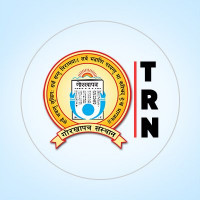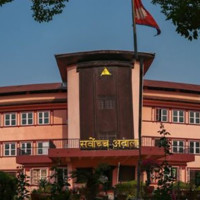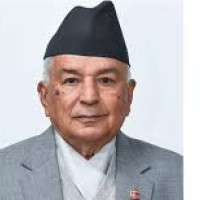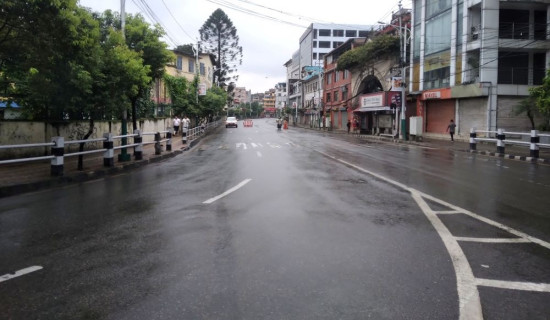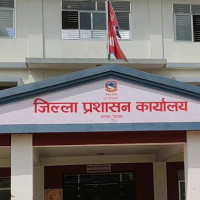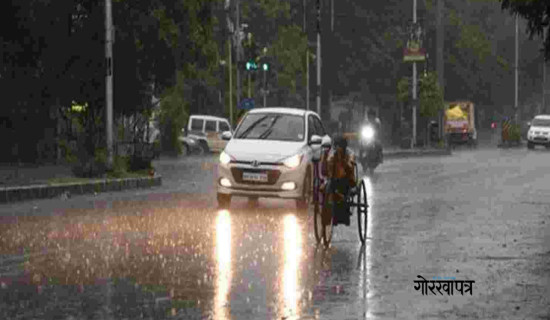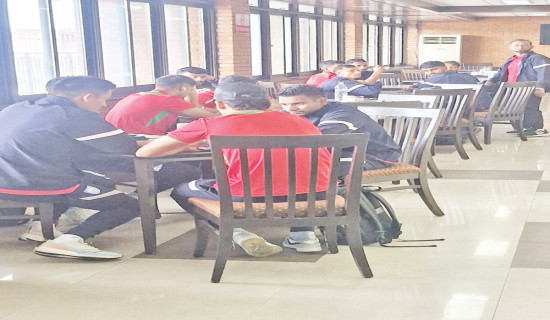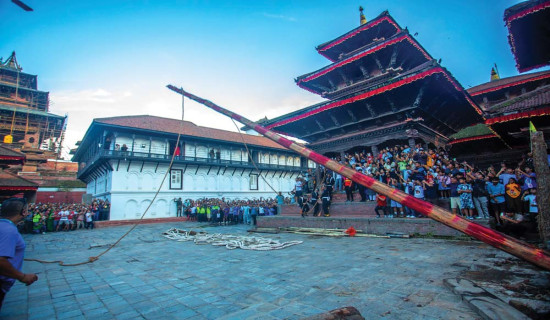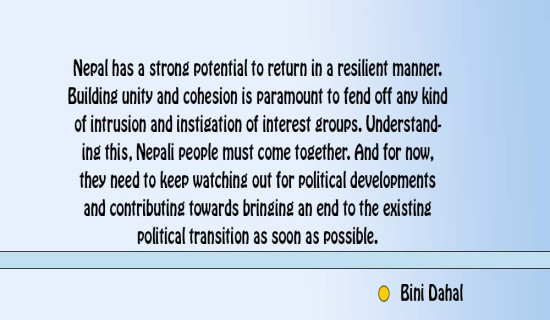- Friday, 12 September 2025
Everyday life in Kathmandu gradually returning to normal
BY SUSHMA MAHARJAN
Kathmandu, Sept. 12: Life in the capital is gradually returning to normal after days of unrest, curfew, and prohibitory orders imposed in the wake of the September 8 Gen Z protest and the widespread destruction of public property that followed on September 9.
The government had deployed the army and enforced prohibitory orders from the evening of September 9, restricting public movement. People were allowed limited hours, from 6 am to 10 am and 5 pm to 7 pm, while a night curfew remained in place from 7 pm to 6 am until September 11.
As restrictions were lifted, market areas across Kathmandu witnessed renewed activity. Grocery shops and vegetable stalls opened in major and inner-city markets, while clothing, electronic, and glass stores were also seen resuming operations.
For many, however, uncertainty persists. “Business has started but uncertainty still looms,” said Binay Ghimire, who owns a shoe store in Ason. “The Gen Z protest became a victory, but the aftermath is affecting our daily lives. With Dashain approaching, I hired two new staff and bought goods on credit. I have rent, salaries, and bonuses to manage. If this situation continues, it won’t be a happy Dashain for me. I just want life to return to normal.”
Street vendors and daily wage earners, who rely on everyday sales, have been among the hardest hit. Maya Shrestha, a 52-year-old vegetable seller at Maru, said she rushed to put vegetables on display on roadside as soon as the prohibition period was lifted, hoping to earn something. “Every day without business feels like a loss. I ran to sell vegetables the moment we were allowed out, thinking at least some money would come. But customers are fewer. My household depends on this, and if the situation doesn’t settle, I don’t know how we’ll manage Dashain expenses,” she said.
Meanwhile, cultural life in the city also bore the brunt of the restrictions. The concluding day of the eight-day-long Indra Jatra, one of Nepal’s most significant festivals, was marked in a subdued manner.
While key rituals were performed, the grand chariot processions on the last day called Nanicha Ya was canceled. The deities Ganesh and Bhairav were carried to the Kumari Chhen in Basantapur Durbar Square for worship along with the Living Goddess Kumari, but she was not taken out of her residence on this day.
Pulukisi and Lakhe were taken out for puja rituals, but traditional dances such as the Mankal and Sawabhaku were absent.
As per tradition, locals took down the Yosin (ceremonial wooden pole) at 5:38 pm on Thursday, signaling the end of the festival. The Yosin had been erected on September 3 at 10:32 am to mark
its beginning. With prohibitory orders lifted and festivities winding down, Kathmandu residents are now seeking stability and a return to everyday life as the festival season approaches.


